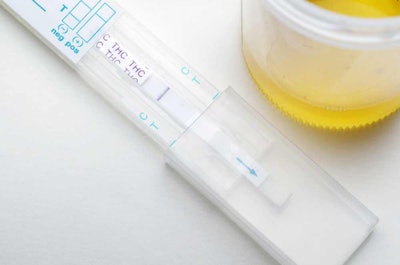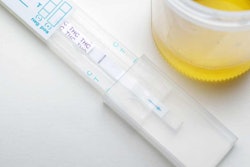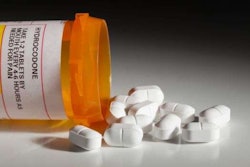 The Trucking Alliance, a trade group made up of some of the country’s largest carriers, says hair testing provides a more accurate picture of a driver applicant’s prior drug use. The tests are more expensive, however, and “aren’t more or less reliable” then urine screening, says Tom Fulmer, of testing supplier National Drug Screening.
The Trucking Alliance, a trade group made up of some of the country’s largest carriers, says hair testing provides a more accurate picture of a driver applicant’s prior drug use. The tests are more expensive, however, and “aren’t more or less reliable” then urine screening, says Tom Fulmer, of testing supplier National Drug Screening.Since 1991, federal law has required applicants for truck driving jobs to be screened for drug use via a urine sample test. However, efforts of late by some of the country’s largest carriers seek to alter that law, hoping instead to see drivers screened via a hair sample test in lieu of the decades-long urine sample standard.
The carriers, who make up the trade association the Trucking Alliance, argue that hair sample tests are more reliable in detecting drug use of driver applicants, particularly for users of opioids — use of which has surged since the urine sample standard was adopted in 1991. The Alliance is lobbying Congress to take up legislation to require applicants for driving jobs to be tested via a hair sample, either in lieu of or in addition to a urine sample test.
Testing hair samples, instead of urine, provides a more accurate and longer-term look at a potential driver’s prior drug use, says Lane Kidd, managing director of the Alliance. “The industry needs a better method to identify opioid and drug use,” he told CCJ in May. “You have to have been clean for at least 30 days when applying for” a driving job. “The only test available today to do that is with hair. If somebody comes up with a better test, let’s use that. The testing method we use today isn’t giving us good results,” he says.
Data from carriers in the Alliance back this up, says Kidd. He points to J.B. Hunt as an example, which has for a decade tested drivers via both hair sample and urine sample. Since 2008, J.B. Hunt has turned away nearly 6,000 driver applicants who failed a hair sample test but passed a urine test, he says. “Those that J.B. Hunt sent on their way are likely working for another company today,” he says.
However, hair sample tests often come with a higher price tag for those paying for the tests, whether it’s carriers having to foot the bill for its drivers, or independent owner-operators paying for their tests as part of a consortium program. And though hair sample tests provide a broader window into a driver’s drug use, “it’s not more or less reliable,” says Tom Fulmer, vice president for business development of National Drug Screening, a national provider of DOT drug tests.
“They’re both reliable indicators,” of drug use, he says. “They’re different in their detection windows. A driver could smoke a joint or snort cocaine and come back in and do a hair test and it’s not going to show up. But with urine, you’re going to detect something in that time frame.”
On the flip side, a driver applicant who takes opioid pain pills hours before a urine test will likely pass, says Kidd, but they will fail a hair sample test.
Fulmer says his company has seen an increase in the number of hair sample tests requested by carriers in recent years, despite their higher costs. He says hair sample tests run about $80 to $120 per test, while urine tests cost between $30 and $50. Hair sample screening requires more work from the lab, he says, which is why they cost more.
Ashlee Bonvicin, a vice president at U.S. Drug Test Centers, noted the same, saying her company charges between $70 and $130 for a urine sample test. “Hair tests [cost] about double that,” she says.
She agrees, however, that hair sample tests are likely better at detecting lifestyle drug users. “It’s hard for an avid user to stop for three months, take the test and then start using again,” she said, whereas urine sample tests often times allow drug users to stop for only a few days before taking a test.
Costs shouldn’t be an issue that impedes safety, says Kidd, who contends the industry is “relying on erroneous information and data” regarding drug testing, due to urine tests’ inability to detect longer-term drug use. “If we’re missing nine out of 10 opioid users, we have a problem,” he says. “There’s nothing to suggest that the data compiled by J.B. Hunt is anything but 100 percent factual.”
According to Hunt’s data, 7.7 percent of its driver applicants tested positive for opioid use in a hair sample test. “If 7.7 percent [of drivers] are taking opioids — that’s a problem that nobody is looking at,” due to the lack of industry-wide data on the issue, he says.
The 2015 FAST Act highway bill opened the door for broader use of hair sample testing by carriers. It will allow carriers to test drivers exclusively via hair sample, but only after the Department of Health and Human Services creates guidelines for such testing and the Federal Motor Carrier Safety Administration develops a rule to change existing regulations. Given the pace at which government agencies move, those changes could still be months, if not years, away.
For instance, the FAST Act gave HHS until December 2016 to produce the guidelines. A year and a half later, the guidelines have yet to be developed. FMCSA’s rulemaking process could take months, if not longer, to alter the existing regs requiring a hair sample test after HHS publishes its guidance. HHS told CCJ in a statement “are in the process of being written,” and that the agency does not have a timeline for when they will be completed.
The change wouldn’t require that drivers be tested via hair sample, but it could broaden the use of such tests, given carriers wouldn’t have to perform two tests.
The Owner-Operator Independent Drivers Association has said it opposes any moves to require hair sample screening of drivers, arguing that data from FMCSA shows that drug use was a factor in only half of a percent of crashes.
Kidd, however, rebuts this argument. He says there’s a failure among crash investigators to test drivers promptly for drug use. “There needs to be a post-accident test requirement that responders get a hair clipping at the scene,” he says. “That would give us a realistic picture of whether a driver was under the influence when he had the accident.”











